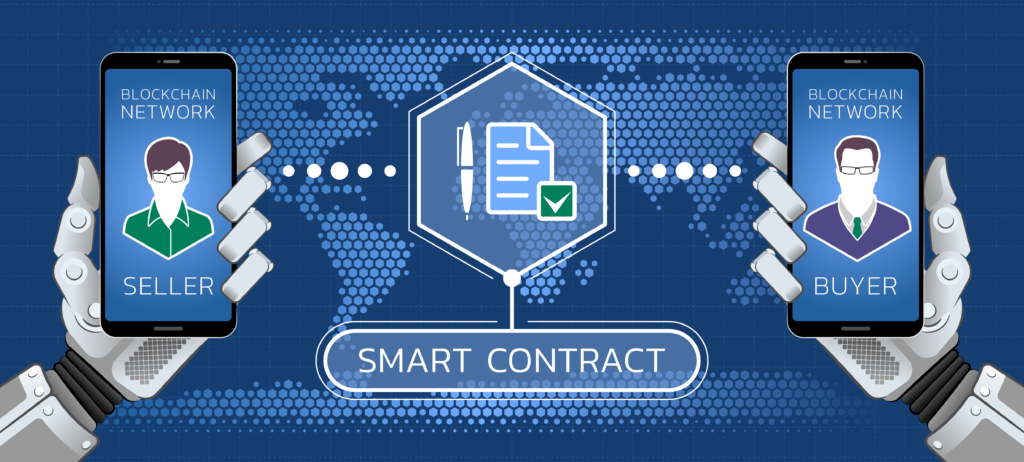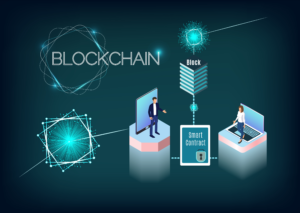Most people are familiar with automated transactions such as standing orders and direct debits. These are in effect smart contracts. Unlike blockchain smart contracts, these financial transactions take place in ‘centralized finance’ (CeFi) databases, that are centrally owned and controlled by financial institutions such as banks, building societies and insurance companies.
There are good reasons for this. The process of sharing internet files such as text, music and images, involves automatically creating a copy of the file and transmitting the copy to the recipient. Consequently, the sender and recipient now each have an identical copy of the same file.
Such a system works well for files of no value, but sending money across the internet requires that only one instance of the monetary value is maintained. When money is sent to a recipient, the sender no longer has ownership of it. If multiple instances of the monetary value were created each time, repeated transactions would eventually duplicate and devalue the currency until it was worthless.
Centralised databases ensure that only one instance of the monetary value is recorded during each transaction, maintaining the currency value. The centralised databases owners are also responsible for creating and maintaining the trust between collaborating strangers, such as maintaining database security.
Decentralised databases, or ‘decentralized finance’ (DeFi), based upon the blockchain, overcome these dilemmas without the need for an intermediary.
Imagine the blockchain as a magical book that automatically duplicates itself into as many copies as people want, for free. Imagine also that this magical book is a financial ledger that automatically rejects invalid transactions such as inadequate funds in the account or an incorrect password, but automatically accepts valid transactions which are then recorded into the ledger. This magical ledger then automatically copies these new transactions to all other existing copies of the ledger. Once these ledgers have synchronised and updated each other to ensure that they have exactly the same identical data, these new transactions are permanently recorded in a block with a chronological timestamp which are then linked to previous blocks. This in essence is the blockchain.
The blockchain exists on a computer network as a distributed database. Each computer server, called a node, contains a blockchain database. The blockchain on each node is duplicated across all nodes in the computer network, creating a permanent immutable record of all previous transactions. For a hacker to change any historical record, would require making the same updates to at least 51% of the nodes on the network, all at the same time – a virtually impossible task. Thus, the block is a very secure and permanent ledger of all historical records available for anyone to access.
The blockchain is a ‘trustless’ system. ‘Trustless’ normally means not trustworthy, such as a trustless person, who cannot be trusted. However, in the context of a system such as blockchain, a trustless system means that the participants involved do not need to know or trust each other or a third party for the system to function.
With the advent of cryptocurrencies based on the blockchain, such as Bitcoin, financial transactions can be sent across the internet, without the need for an intermediary. Since then, more advanced cryptocurrencies have evolved, such as Ethereum, offering better blockchain platforms for smart contracts.
How do Smart Contracts Work?

A vending machine is another example of an automated payment system. When money is inserted into a vending machine and the purchase item selected, the machine automatically verifies the sum and dispenses the product. Think of a smart contract on the blockchain as a very secure vending machine.
Smart contracts are pieces of computer code that are stored on the blockchain. They are self-executing with the terms of the agreement between the buyer and seller being written directly into the lines of code. Once uploaded, the code and the agreements contained therein are duplicated across the entire blockchain network. Thus, the smart contract becomes a permanent part of the blockchain and is immutable unless programmed otherwise.
The code controls the execution, and transactions are permanently recorded in the blockchain, making them trackable and irreversible. Smart contracts permit trusted transactions and agreements to be carried out among disparate, anonymous parties without the need for a central authority, legal system, or external enforcement mechanism.
A smart contract as such is not a legal contract. However, provided that it contains all of the requirements of a legal contract, then for all intents and purposes, there is no reason why a smart contract cannot in principle be a legal contract, in the same way that binding contracts can be formed electronically through online applications.
In summary, smart contracts store rules, verify rules, and self-execute rules.
The Benefits of Smart Contracts

There are real benefits to smart contracts. They are very secure since they use cryptography to stop people from altering records, and are based upon a distributed database providing self-correction to eradicate tampering and system errors. The blockchain is transparent, so that everyone can view what the smart contract is and what it is being used for. Smart contracts are third-party free, eliminating middlemen fees and delays; validation is performed by the blockchain itself. Smart contracts are autonomous, eliminating the limitations of opening hours, and transactions are performed quickly. Since smart contracts are written in computer code, they don’t rely on the ambiguity of language and multiple definitions of words.
Smart contracts are limited in their functionality, but can be joined together into more complex applications by Decentralised Applications (dApp), which sometimes come with a user-friendly, front-end interface.
Smart contracts also offer the opportunity for ‘programmable money’ and ‘programmable payments’. These two terms are often used interchangeably, but they are not the same. To illustrate these differences, consider the following examples.
- Programmable Money: Imagine a currency that will automatically pay your taxes for you, or a currency that will provide discounts at the point of purchase to selected individuals such as veterans or seniors.
- Programmable Payments: Imagine automatically being refunded, after the smart contract has validated with the airline flight schedule that your flight was cancelled. Smart contracts can also be used to automate the process of validating that goods are delivered before payment.
One serious concern is government intrusion into our lives. In a cashless society, governments would be able to track every penny in every transaction, and they would also have the ability to control our financial transactions, creating a ‘Big Brother’ Orwellian dystopian society. Political debates may need to take place, for example of whether governments should use programmable money to ensure that benefits are spent in a timely fashion and only for predefined items such as food, medicine, or clothes.
Yet the blockchain and smart contracts offer immense opportunities throughout the world. In developing countries, for example, instead of making long, dangerous journeys, carrying large sums of cash, to pay aid workers in remote locations, payments could be downloaded instantly from a satellite to a mobile phone. The money would be distributed electronically without the need for cash, and would not even need to be counted.
The immutability of the blockchain offers remote land owners the opportunity of permanently recording the deeds of their land that they have occupied for generations, without dependence on corrupt governments.
There are currently 4.66 billion people in the world with access to the internet, approximately 65.6% of the entire world’s population, but that figure is growing. There are approximately 1.7 billion people in the world who do not have a bank account.
For those people with internet access, blockchain and smart contracts offer the opportunity of participating in the world’s economy, because blockchain does not use financial intermediaries such as banks, and the security of blockchain means that such people do not need to provide personal details such as a credit rating.
Smart contracts and dApps are still in their infancy and we are still exploring their great potential. Smart contracts are already being used for a huge range of tasks, including digital identities, supply chain management, insurance, data storage, authenticating videos and photographs from deep fakes, and so much more.
What benefits this technology will bring us we have yet to discover. What we can be sure of is that blockchain, cryptocurrencies and smart contracts are already changing our lives, and this exciting journey has only just begun.
For self-directed traders & investors who want to Fund Their Retirement
Are you a self-directed trader or investor? Are you looking for research, analysis techniques and profitable strategies that can be applied on currencies, commodities, and cryptos?
Published monthly with time critical intra-weekly updates when required. The newsletter covers forex, major crypto-currencies and the commodity markets. The Newsletter specilises in taking advantage of longer-term buy and hold strategies, and shorter term trading opportunities.
The service uses a top down approach, that means analysing global factors such as the economic environment, political events, technicals, and market sentiment. Using a combination of modern technology and the 20 plus years experience of the team helping our clients navigate the financial markets with clarity and confidence.

